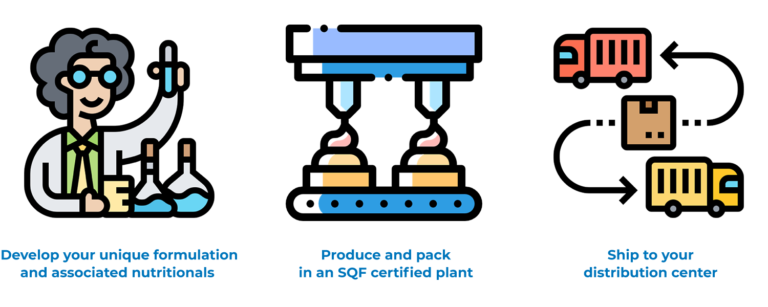There are many steps to custom product development — from the initial design stages to prototyping. And eventually manufacturing products for delivery to customers. Here’s a 5-step guide to follow when customizing and developing new products. 5 Steps to Custom Product Development.
Section: Conduct Market Research.
1.The first step in the process of developing a new product is to conduct market research. This will give you insight into what consumers want. How much they are willing to pay for it and how well your customized product will fit into the marketplace.
2.The goal of market research is to determine whether there is a demand for your product. If there is, you can move on to the next step of developing a prototype. If not, it may be time to consider a different business idea.
3.If you are creating a new product, you need to know whether it will sell. One of the best ways to do this is by conducting market research. There are many different types of market research that can be used depending on what stage your product is in and what kind of information you want.

Section: Create Product Development Roadmap and Timeline.
Developing a product is a big undertaking.
- It’s important to create a roadmap that will guide you through the process and keep you on track. This can be as simple as creating an outline of all the steps it takes to bring your idea to life. Like breaking down each step into smaller tasks with timelines attached.
- The best way to do this is by creating a product development roadmap and timeline. This will help you stay focused on the important parts of your project. Avoid wasting time on things that don’t matter and give you an idea of how long it will take to complete.
- In this article, we’ll walk you through how to create a product development roadmap and timeline. We’ll also give you some tips on how to make the most of it by focusing on critical tasks.
A product development roadmap is a visual representation of the steps.
You need to take to bring your idea to life. It includes all the major tasks that need to be completed. Such as researching, designing and building prototypes.
The goal of a product development roadmap is to help you visualize the overall process. It helps you keep track of what’s been done and what needs to be done next. The key to a successful product development roadmap is to focus on the critical tasks. That need to be completed. These are the steps that move your idea forward toward launch. Here’s how to create a product development roadmap:
-Start by listing all of the major tasks that need to be completed. These should include research, design and development.
-Include each task in its own column on a spreadsheet or whiteboard. You can also create an outline with these steps in mind if you’re working digitally.
-Create a timeline for each task, showing when it should be completed. The timeline should be based on how long each task typically takes to complete. This can depend on the type of product you’re creating. And whether you have any partners involved in the process.

Section: Design and Test Prototype.
-Design your product. This includes creating a prototype, which you can use to test the product with customers.
-Create mock-ups or prototypes that allow you to get feedback from potential users. The goal is to make sure that they understand how it works and what benefits it provides.
-Use this feedback to improve your design before moving on to development.
Development
-Build the product.
-This includes all of the coding, electronics and other technical tasks involved in creating your product. This can also include sourcing materials, such as plastic or metal components.
You’ll need to make sure that your product meets all safety standards. Including any relevant electrical standards. If you plan to sell the product in Europe. Then this may mean registering it with an approval body such as Notified Body (UK) or CE Marking (EU).
-You may need to conduct some market research and user testing at this stage.
-This will help you find out if people like your product. How they use it and whether there are any changes that need to be made.

Section: Verify Production Specifications.
1.This includes making sure that all the components of your product meet the specifications and quality requirements. You may need to visit some of your suppliers’ factories. And make sure that they are following good manufacturing practices (GMPs). This is especially important if you’re selling products in Europe. As these regulations will apply to any company within the EU.
2.If you’re selling the product in other countries, you may need to get the appropriate certifications. This will depend on the regulations in that country. Develop a Production Schedule and Budget.
3.This includes planning when your suppliers will deliver each component of your product. And how much it will cost to produce it at scale.
4.Once you have an idea of how much it will cost to produce your product, set a budget for each component. This can help you determine. Whether you should outsource any parts of the manufacturing process or keep it in-house.
5.Once you’ve developed a production schedule.Make sure to check in with your suppliers and give them plenty of time to meet their deadlines.
6.If your product is complex or has a long manufacturing cycle. Consider hiring a project manager or consultant to help manage the process.

Section: Execute Manufacture Launch Plan.
1.Once you have a production schedule in place. It’s time to execute it. Make sure you have everything ready before manufacturing begins so there are no delays. This includes prototypes, packaging and branding materials.
2.Before you start mass production of your product. Make sure to test its quality and functionality by creating an initial batch of units for beta testing purposes.
3.Once you’re sure the product is ready for mass production. It’s time to launch and market your product into the marketplace.
Monitor Sales and Customer Feedback So You Can Make Changes If Necessary.
1.Monitoring sales isn’t just about tracking how many units have been sold. It also includes understanding why people buy your product in the first place. And what they like or dislike about it. This will help you make changes if necessary.
2.Use customer feedback to make changes to your product based on what people are saying. You can ask for feedback in a survey or via an online form.
3.Analyze your sales data thoroughly to determine if there are any trends or patterns. This will help you figure out what’s working and what needs improvement.
Maxtop Tech is a China sourcing company and supply chain assistance management company. Our service for buying office is help our customers to import goods from China more smoothly, more simple. more time-saving.
